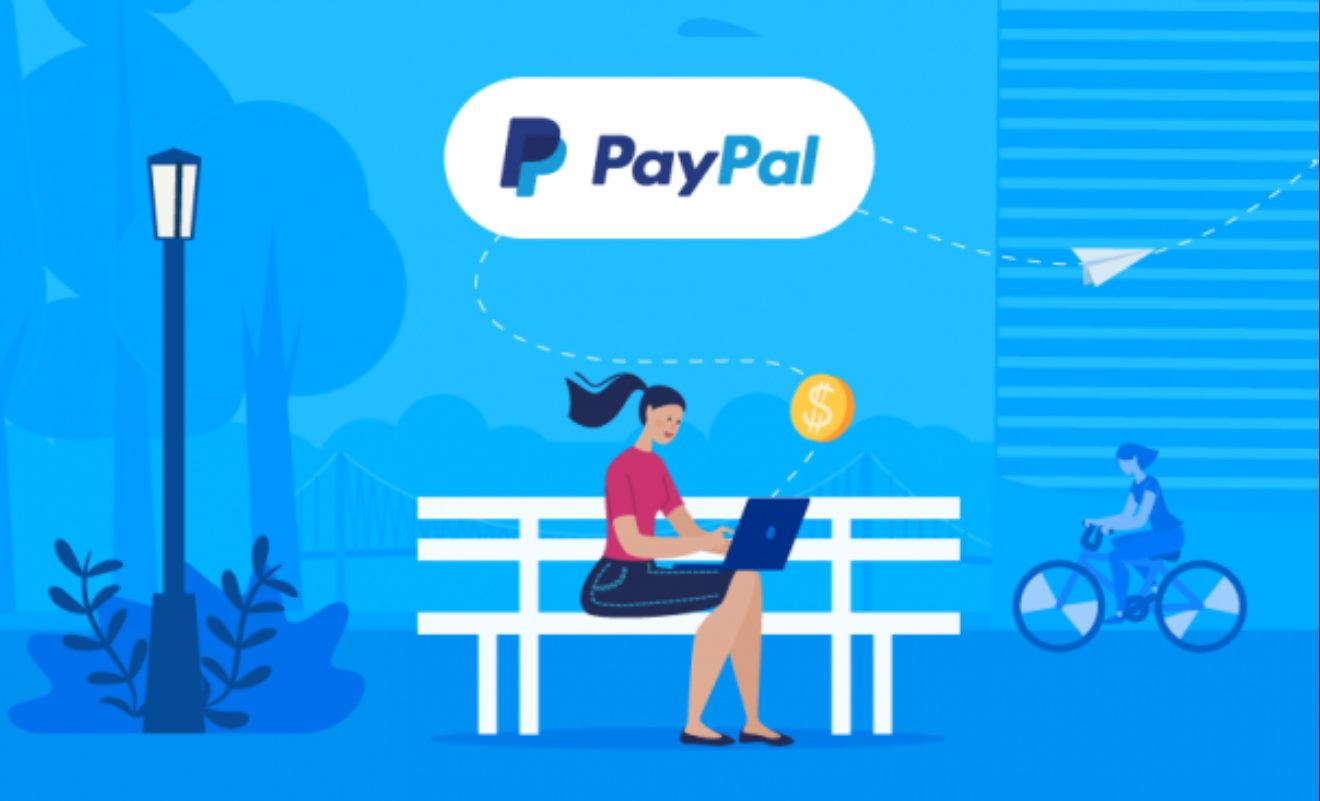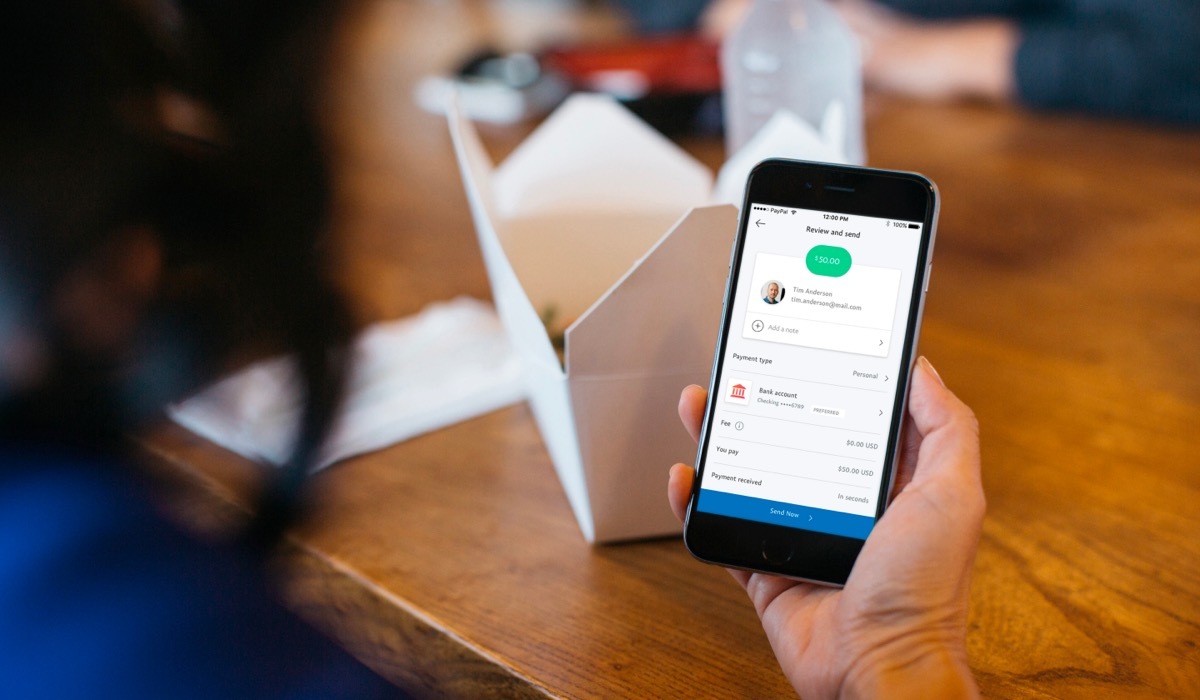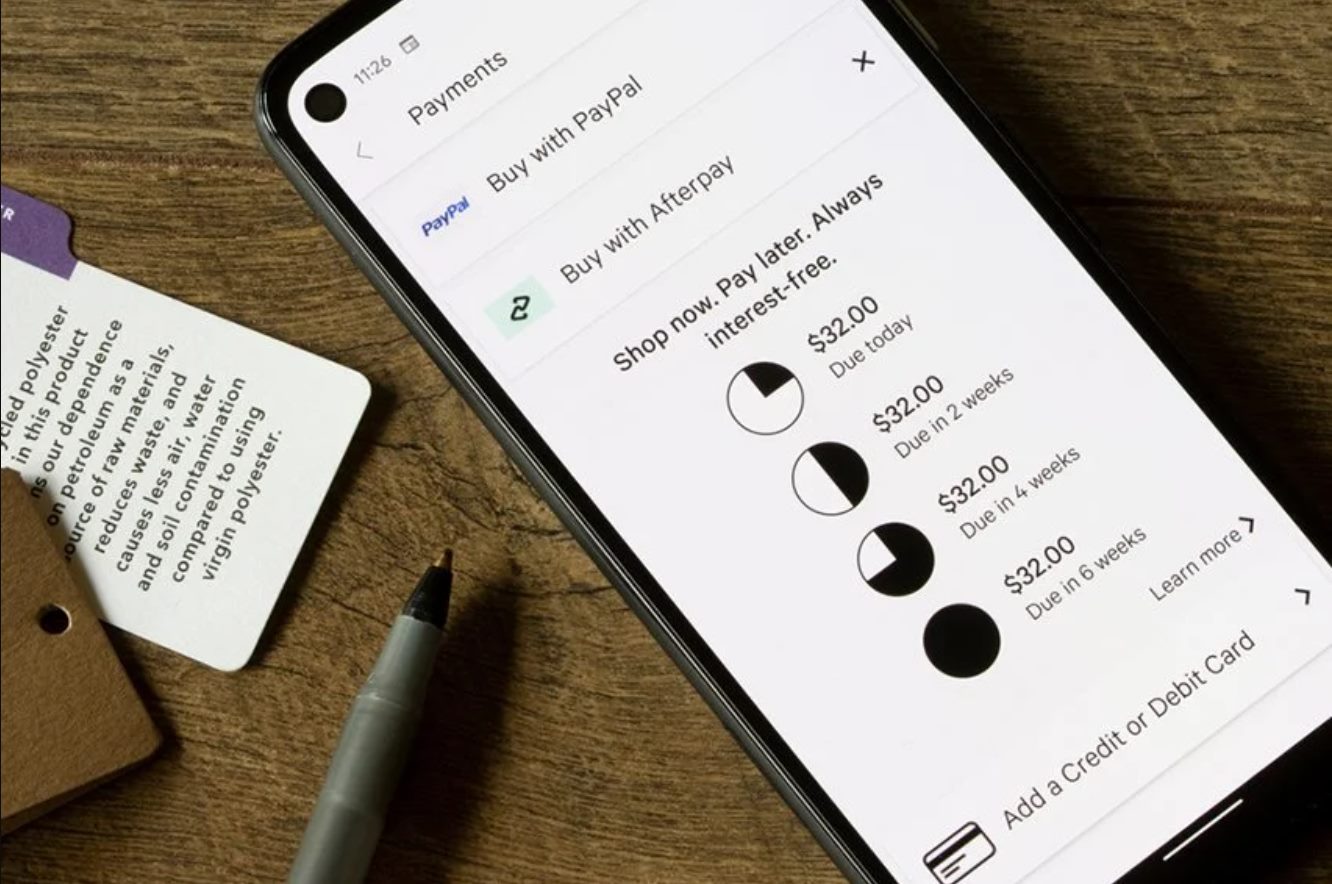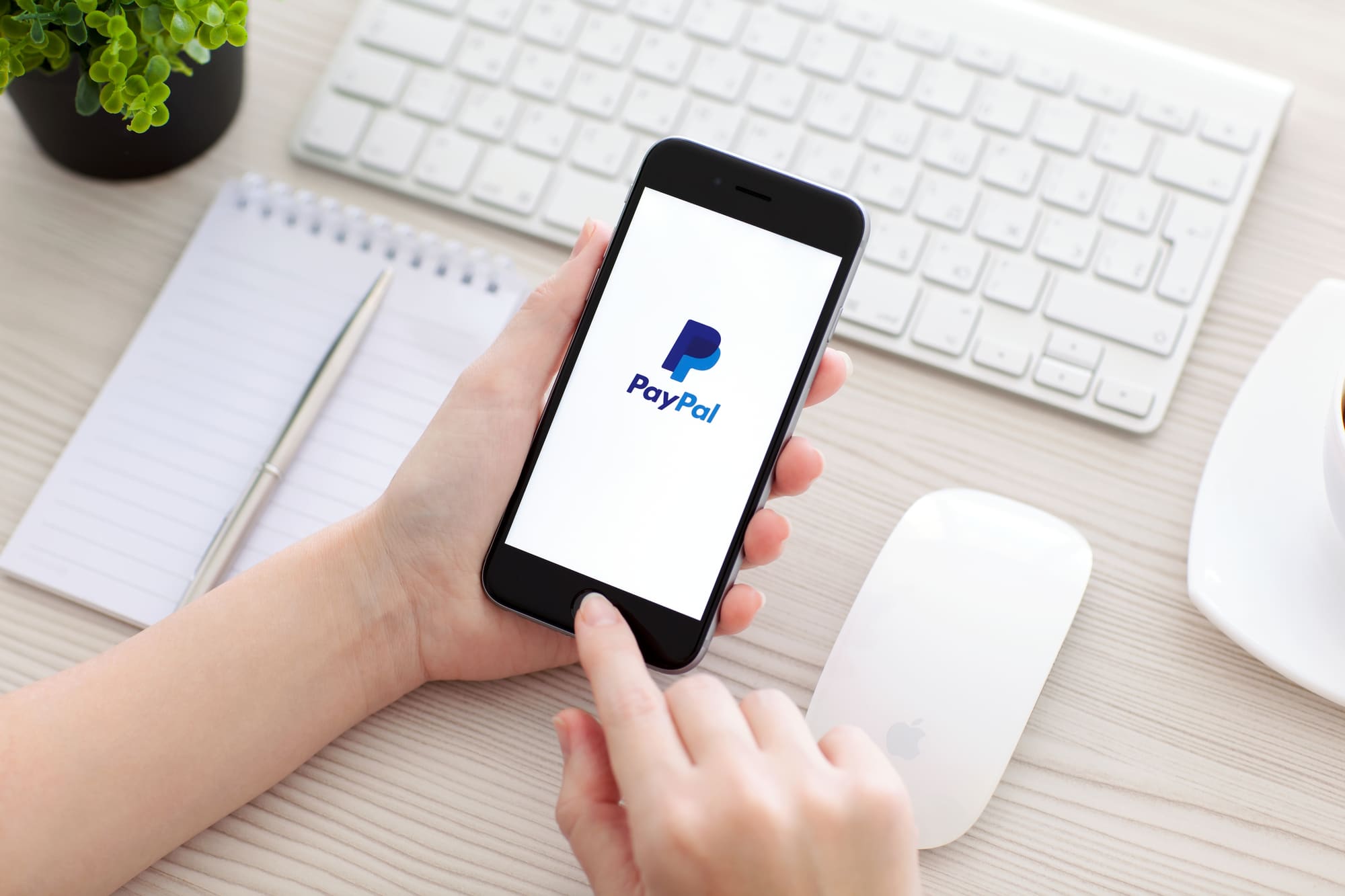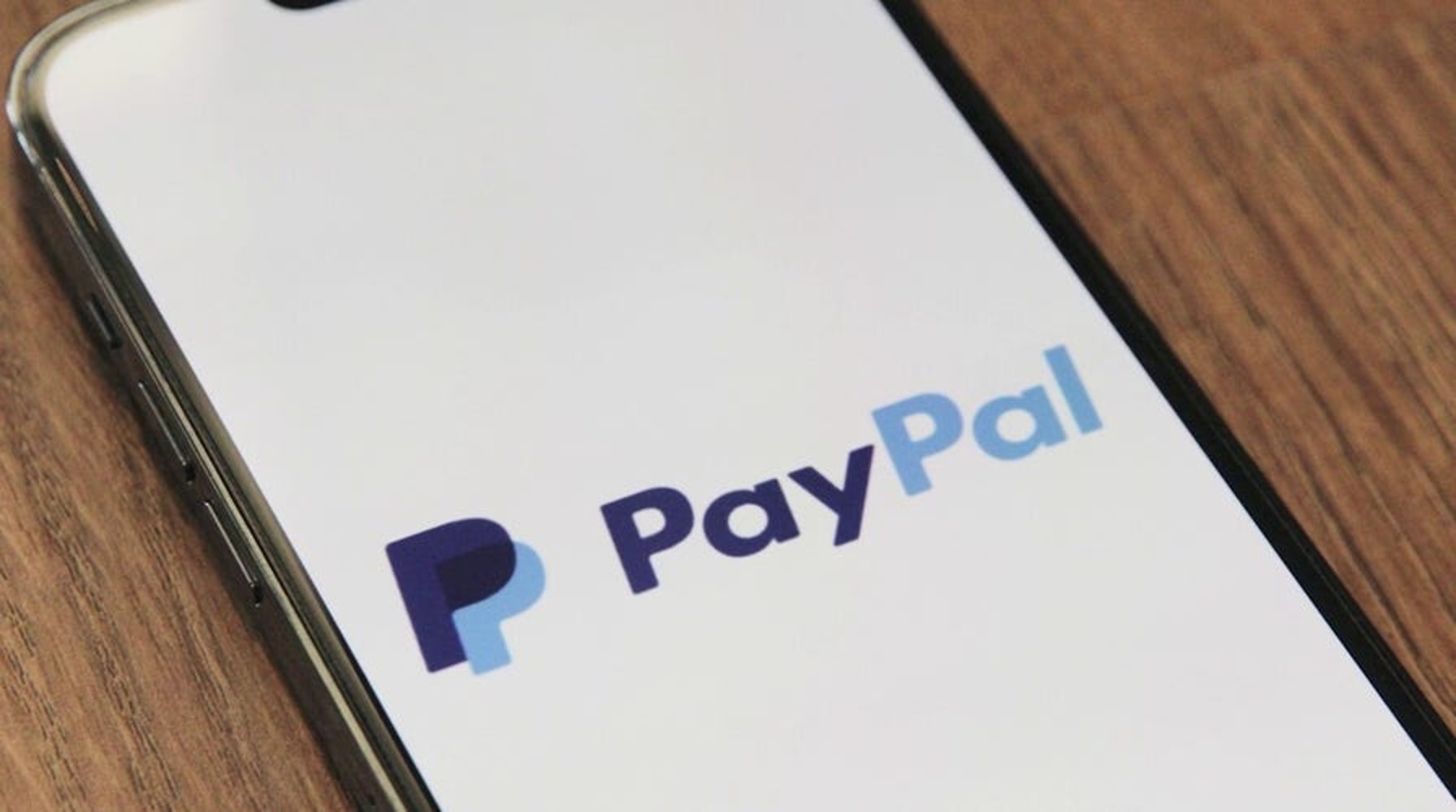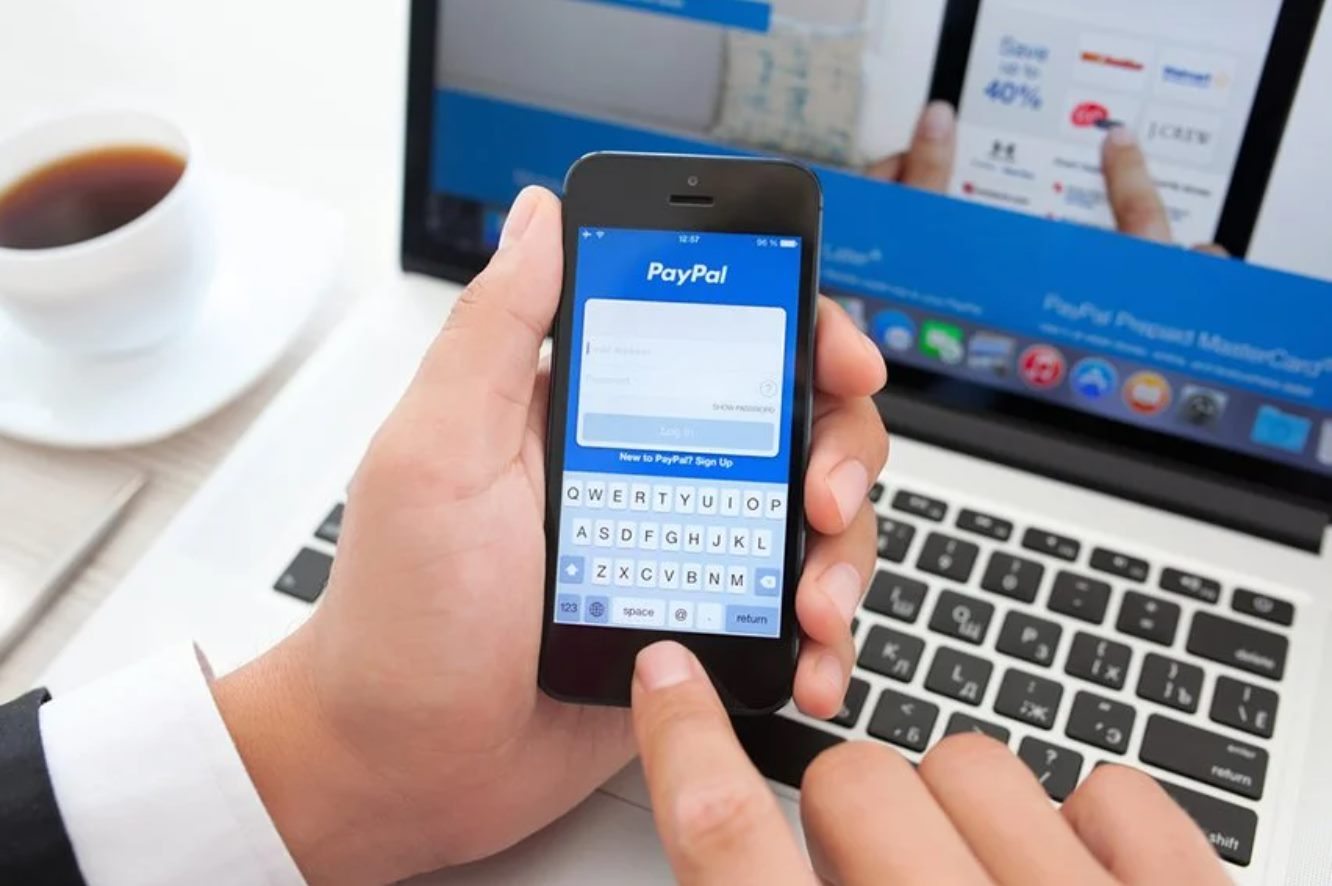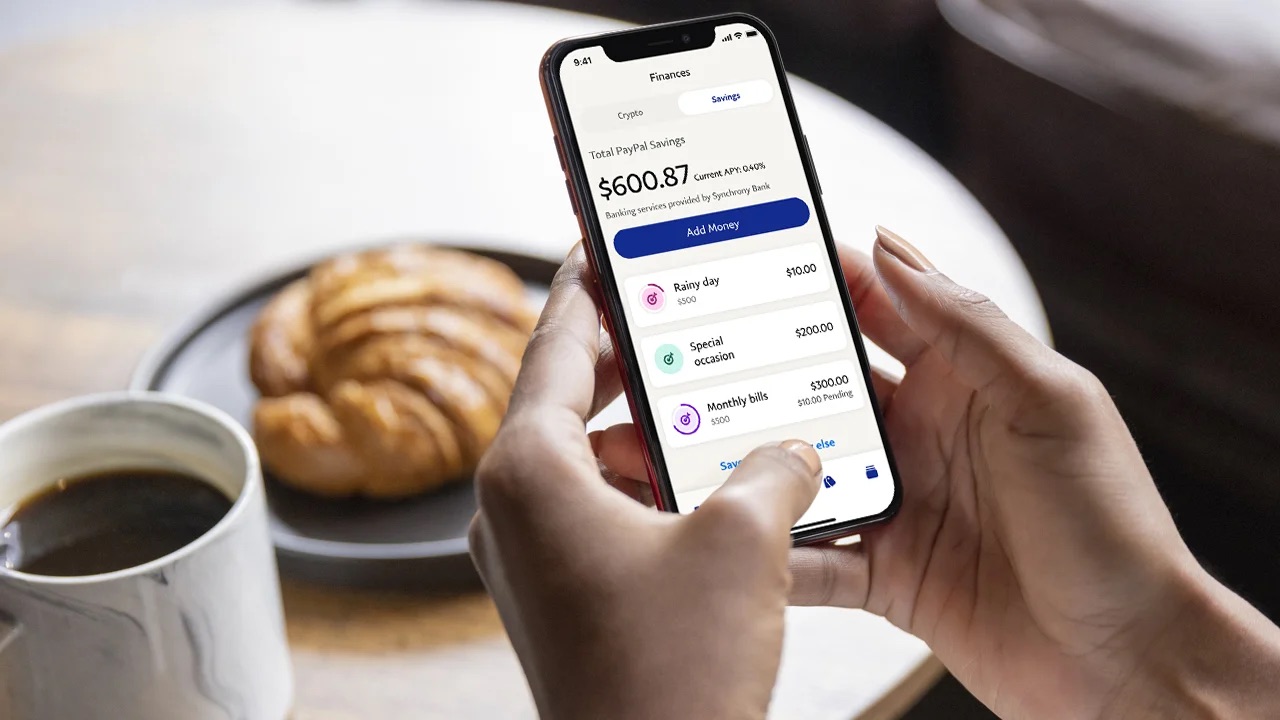Introduction
Welcome to the world of PayPal, an online payment platform that has revolutionized the way we make transactions on the internet. With over 400 million active users worldwide, PayPal offers a secure, convenient, and flexible way to send and receive money, make online purchases, and conduct business transactions. Whether you’re a small business owner, an avid online shopper, or someone who frequently sends money to friends and family, PayPal has got you covered.
This article will guide you through the ins and outs of using PayPal, from setting up your account to understanding transaction fees and ensuring the security of your personal and financial information. So, let’s dive in and explore how PayPal works and how you can make the most of this versatile platform.
It’s important to note that PayPal is not a bank, but rather a digital wallet that allows you to link your bank accounts and credit cards to make online payments. With PayPal, you can make purchases on various e-commerce platforms, transfer money to friends and family, receive payments for goods and services, and even withdraw your funds to your bank account.
Whether you’re a buyer or a seller, PayPal offers numerous advantages. As a buyer, you can enjoy peace of mind with PayPal’s Buyer Protection, which helps resolve disputes and provides refunds for eligible purchases. As a seller, you can expand your customer base by accepting payments from PayPal users around the world, while also benefiting from PayPal’s Seller Protection.
In the following sections, we’ll walk you through the process of setting up your PayPal account, linking your bank account or credit card, making payments, sending money to loved ones, purchasing goods and services, and much more. So, let’s get started on your journey with PayPal!
Setting Up a PayPal Account
If you’re new to PayPal, the first step is to create an account. Visit the PayPal website or download the PayPal mobile app to get started. You’ll be prompted to choose between a personal or business account.
A personal account is suitable if you primarily use PayPal for personal transactions, such as shopping online or sending money to friends and family. On the other hand, a business account is more suitable if you’re a small business owner or if you plan on using PayPal for commercial purposes.
Once you’ve selected the account type, you’ll be asked to provide your email address, create a password, and enter your personal information, including your name and address. Make sure to double-check your information for accuracy, as this will be used for verification and communication purposes.
After providing the required details, PayPal will send a confirmation email to the address you provided. Click on the link in the email to verify your account. Once verified, you can start using PayPal to send and receive money.
To enhance the security of your PayPal account, consider enabling two-factor authentication. This adds an extra layer of protection by requiring a unique verification code, which is sent to your mobile device, in addition to your password.
Keep in mind that PayPal may request additional information to verify your identity and ensure the security of your account. This can include providing a copy of your identification document or linking your bank account or credit card.
It’s worth noting that PayPal operates in various countries, so be sure to check if PayPal is available in your country before attempting to create an account. Additionally, PayPal may have specific rules and restrictions depending on your location, so familiarize yourself with the terms and conditions to ensure compliance.
Now that your PayPal account is set up, let’s move on to the next section where we’ll learn how to link your bank account or credit card for seamless transactions.
Linking Your Bank Account or Credit Card
Once you have created your PayPal account, the next step is to link your bank account or credit card to facilitate transactions. Linking your preferred payment method allows you to transfer funds in and out of your PayPal account with ease.
To link your bank account, log in to your PayPal account and navigate to the “Wallet” section. From there, click on the “Link a bank account” option. You will be prompted to provide your bank’s name, your account number, and the routing number. PayPal will verify your bank account by making a small deposit and withdrawal, which you will need to confirm to complete the verification process.
If you prefer to link a credit card, the process is similarly straightforward. In the “Wallet” section, select the “Link a debit or credit card” option. Enter your card details, including the card number, expiration date, and security code. PayPal will validate the card information to ensure its authenticity.
Linking your bank account or credit card to your PayPal account offers several benefits. First, it provides you with a convenient payment method for online purchases, eliminating the need to enter your payment details for each transaction. Additionally, by linking your bank account, you can transfer funds between your PayPal account and bank account seamlessly.
It’s important to note that while linking your bank account or credit card is not mandatory, it is highly recommended to fully enjoy the features and benefits of PayPal. Keep in mind that PayPal may have limitations on the number of bank accounts and credit cards that you can link to your account, so be sure to check the specific guidelines for your region.
Now that your payment method is linked, you’re ready to start making payments and transactions using PayPal. In the next section, we’ll explore how you can make payments to family and friends as well as purchase goods and services online.
Making Payments with PayPal
One of the primary functions of PayPal is the ability to make payments to individuals and businesses with just a few simple clicks. Whether you’re splitting a bill with a friend, paying for an online purchase, or subscribing to a service, PayPal offers a convenient and secure way to transfer funds.
To make a payment, log in to your PayPal account and navigate to the “Send & Request” section. From there, select the “Send money to friends and family” or “Pay for goods and services” option, depending on the nature of your payment.
If you’re sending money to friends and family, simply enter the recipient’s email address or mobile number, the amount you wish to send, and a personal note if desired. PayPal allows you to send money to individuals in over 200 countries and regions, even if they don’t have a PayPal account. The recipient will receive an email or text notification and can easily claim the funds by signing up for a PayPal account or providing their bank details.
For making purchases, enter the recipient’s email address or mobile number, the amount to be paid, and any additional information required by the seller. Check the payment details carefully before confirming the transaction, as payments made through PayPal are typically final and may not be reversible.
PayPal also offers the option to request money from others. If you’re owed money or need to invoice someone for a product or service, select the “Request money” option and follow the prompts to send a payment request. The recipient will receive an email notification and can easily fulfill the request by logging into their PayPal account and approving the payment.
It’s important to note that certain transactions may incur fees, such as international payments or payments made in a different currency. Check PayPal’s fee schedule to understand the applicable charges before initiating a payment. Additionally, ensure that you have sufficient funds in your PayPal account or have a linked payment method with available balance to cover the payment.
Now that you know how to make payments with PayPal, let’s explore how you can send money to family and friends and purchase goods and services securely.
Sending Money to Family and Friends
PayPal makes it easy to send money to your loved ones, whether they’re across the street or across the globe. Whether it’s for a birthday gift, covering shared expenses, or simply lending a helping hand, PayPal provides a secure and convenient way to transfer funds.
To send money to family and friends, log in to your PayPal account and navigate to the “Send & Request” section. Choose the “Send money to friends and family” option, and enter the recipient’s email address or mobile number. Next, specify the amount you want to send and add a personal note if desired.
One of the key advantages of using PayPal for these transactions is that it allows you to send money to individuals in over 200 countries and regions, even if they don’t have a PayPal account. The recipient will receive an email or text notification with instructions on how to claim the funds. They can either sign up for a PayPal account to receive the money or provide their bank account details for a direct transfer.
When sending money to family and friends, it’s important to note that PayPal offers the option to send funds in different currencies. This is particularly useful for international transfers, as it allows the recipient to receive the money in their local currency. PayPal’s currency conversion feature ensures transparency and provides real-time exchange rates, so you’ll know exactly how much the recipient will receive.
It’s worth mentioning that when sending money to family and friends, PayPal treats these transactions as personal transfers rather than commercial transactions. As a result, they are not subject to fees when funded by your PayPal balance or linked bank account. However, if you choose to use a credit card or the recipient’s currency is different from yours, currency conversion fees or transaction fees may apply.
Keep in mind that PayPal has safety measures in place to protect both the sender and the recipient. Transactions are encrypted and monitored for fraudulent activity. However, it’s always wise to exercise caution and only send funds to individuals you trust.
Now that you know how to send money to family and friends through PayPal, let’s explore how you can utilize the platform to make purchases of goods and services online.
Purchasing Goods and Services
One of the key advantages of using PayPal is its widespread acceptance as a payment method for online purchases. Whether you’re buying clothes, electronics, or booking services, PayPal offers a secure and convenient way to complete your transactions.
When you’re ready to make a purchase, look for the PayPal checkout option on the website or app of the merchant. Select PayPal as your payment method, and you’ll be redirected to the PayPal login page.
Log in to your PayPal account, review the payment details, and confirm the transaction. PayPal will securely transmit the payment information to the merchant, eliminating the need to enter your credit card or personal details on their website.
One of the significant advantages of using PayPal for online purchases is Buyer Protection. If the goods or services you receive are significantly different from the description or if you encounter any issues with the transaction, you can file a dispute with PayPal to seek a resolution. PayPal will investigate the matter and, if deemed valid, may issue a refund.
Furthermore, PayPal offers an additional layer of security with its One Touch feature. Once enabled, you can make purchases with participating merchants without having to enter your login and payment details each time. This feature ensures a smooth and seamless checkout experience.
PayPal also has a wide network of merchants that offer special promotions and discounts to PayPal users. Keep an eye out for these offers, as they can provide significant savings on your purchases.
It’s important to note that not all online merchants accept PayPal as a payment method. However, PayPal’s extensive network allows you to shop at thousands of online stores across various industries, making it a versatile solution for your online shopping needs.
When making purchases with PayPal, it’s essential to keep track of your transactions and check your account activity regularly. This will help you identify any unauthorized or suspicious charges and take immediate action to secure your account.
Now that you know how to purchase goods and services using PayPal, let’s explore the Buyer Protection feature in the next section, which provides additional peace of mind for your online transactions.
PayPal Buyer Protection
When shopping online, it’s natural to have concerns about the reliability and trustworthiness of the seller. That’s where PayPal Buyer Protection comes in. PayPal offers a robust and comprehensive protection program to ensure that you can shop with confidence and have peace of mind.
PayPal Buyer Protection is available to eligible purchases made through PayPal. It provides coverage for items that are significantly not as described, are damaged during shipping, or fail to arrive at all. If you encounter any of these issues, you can file a dispute with PayPal and seek a resolution.
The first step in resolving a dispute is to contact the seller directly to try and work out a solution. If the issue cannot be resolved, you can escalate the dispute to PayPal within a specified timeframe. PayPal will step in and mediate the dispute between both parties to reach a fair resolution.
If the dispute is found in your favor, PayPal may issue a refund for the full purchase amount, including shipping costs. The refunded amount will be credited back to your PayPal account, or in some cases, to your linked bank account or credit card.
It’s important to note that not all transactions are eligible for Buyer Protection. Certain types of purchases, such as vehicles, real estate, and custom-made items, may not be covered. Additionally, there are limitations on the amount of coverage provided per transaction. Be sure to review PayPal’s terms and conditions for detailed information on eligible purchases and coverage limitations.
PayPal Buyer Protection offers an additional layer of security and peace of mind when shopping online. However, it’s essential to practice safe online shopping practices and exercise caution when making purchases from unfamiliar or unverified sellers. Be sure to read product descriptions thoroughly, check seller ratings and reviews, and ask any questions you may have before completing a transaction.
By utilizing PayPal Buyer Protection and following best practices, you can shop confidently and have the assurance that your purchases are protected against fraud and misrepresentation.
Now that you understand how PayPal Buyer Protection can safeguard your online purchases, let’s explore how you can receive money with PayPal in the next section.
Receiving Money with PayPal
One of the great benefits of having a PayPal account is the ability to receive money from others quickly and securely. Whether you’re running a small business, freelancing, or simply collecting funds from friends and family, PayPal offers an efficient and user-friendly platform to receive payments.
To start receiving money with PayPal, simply share your PayPal email address or provide your PayPal.me link to the sender. These details allow others to send funds directly to your PayPal account.
Once a payment is made, you’ll receive an email notification from PayPal with the details of the transaction. The funds will be instantly credited to your PayPal account balance. From there, you can leave the funds in your PayPal account for future purchases or transfer them to your linked bank account.
PayPal also offers invoicing features, making it easy to request and track payments for products or services. With PayPal’s invoicing tool, you can create professional-looking invoices and send them directly to your clients or customers. The invoices can be customized with your business logo and details, and you can specify the payment terms and due date. Recipients can then conveniently pay the invoice directly through PayPal.
If you run an online store or sell goods and services on various platforms, incorporating PayPal as a payment option is highly recommended. PayPal’s extensive network and user base make it a popular and trusted method of payment for online transactions. Many e-commerce platforms and marketplaces offer seamless integration with PayPal, allowing you to receive payments directly into your PayPal account.
It’s important to be aware of the fees associated with receiving money through PayPal. While receiving personal payments funded by a PayPal balance or bank account is free, there are fees for receiving commercial payments or payments funded by credit cards. Check PayPal’s fee schedule for detailed information on the applicable charges.
With PayPal’s reliable and secure platform, you can easily receive money from anyone across the globe, making it an ideal solution for freelancers, businesses, and individuals alike.
Now that you know how to receive money with PayPal, let’s delve into understanding PayPal fees in the next section.
Understanding PayPal Fees
When using PayPal for various transactions, it’s important to understand the relevant fees associated with the platform. PayPal offers transparency by providing a clear breakdown of the fees involved, ensuring that you have a complete understanding of the costs involved.
The fees charged by PayPal can vary depending on the type of transaction and the specific circumstances. Here are some key fees to be aware of:
Transaction Fees: PayPal charges transaction fees for certain types of payments. For example, when receiving payments for goods and services, PayPal deducts a small percentage of the transaction amount as a fee. This fee is generally around 2.9% plus a fixed amount, but it can vary based on the country and currency. Be sure to check PayPal’s fee schedule or consult the PayPal website for the most up-to-date information on transaction fees in your region.
Currency Conversion Fees: If you’re making or receiving payments in a different currency, PayPal may charge a currency conversion fee. This fee is applied when converting one currency to another and is usually a percentage of the converted amount. PayPal provides real-time exchange rates, ensuring transparent and accurate conversion fees.
Withdrawal Fees: When transferring funds from your PayPal account to your linked bank account, there may be withdrawal fees involved. These fees can vary depending on factors such as the type of account and the country you’re withdrawing funds to. It’s advisable to review PayPal’s fee schedule or consult the PayPal website for specific details on withdrawal fees in your region.
It’s important to note that not all transactions incur fees. Sending money to friends and family within the same country, funded by a PayPal balance or linked bank account, is usually free of charge. Additionally, receiving personal payments funded by a PayPal balance or linked bank account is typically free as well.
PayPal’s fee structure may vary in different countries and regions, so it’s vital to consult the official PayPal website or contact PayPal customer support for detailed information tailored to your specific location.
Understanding PayPal’s fees ensures that you can make informed decisions and calculate the costs involved in your transactions. By staying aware of the fees, you can effectively manage your finances and optimize your use of PayPal.
Now that you have a better understanding of PayPal fees, let’s move on to the next section, where we’ll explore how to withdraw money from your PayPal account.
Withdrawing Money from PayPal
Withdrawing funds from your PayPal account is a straightforward process that allows you to transfer your available balance to your linked bank account. Whether you want to access your funds for personal use or need to transfer them to another account, PayPal provides a convenient solution for withdrawing money.
To begin the withdrawal process, log in to your PayPal account and navigate to the “Wallet” section. Here, you’ll find an option to “Transfer Money” or “Withdraw funds.” Click on this option to initiate a withdrawal.
Next, select your linked bank account from the list of available options. If you haven’t already linked your bank account, you’ll need to do so before you can proceed with the withdrawal.
Enter the amount you want to withdraw and review the withdrawal details. It’s important to note that there may be minimum and maximum withdrawal limits imposed by PayPal – these limits can vary depending on factors such as the type of account and your location. Check PayPal’s website or contact customer support to ensure you’re aware of any applicable limits.
Once you confirm the withdrawal, PayPal will begin processing the transfer. The time it takes for the funds to appear in your bank account can vary, but it typically takes a few business days for the transaction to be completed. PayPal will provide an estimated processing time for the withdrawal, and you can also track the status of the transaction in your account activity.
It’s worth noting that PayPal may charge a fee for certain withdrawal transactions, such as transferring funds to a linked debit card or making an instant transfer. These fees can vary depending on the specific circumstances, so it’s important to review PayPal’s fee schedule or contact customer support for accurate information on withdrawal fees applicable in your region.
Keep in mind that if you have multiple bank accounts linked to your PayPal account, you can select the specific account you want to withdraw funds to for each transaction. This flexibility allows you to manage your funds according to your preferences and needs.
By withdrawing money from your PayPal account, you can access your funds and utilize them as desired. Whether it’s for personal expenses or transferring money between accounts, PayPal offers a convenient and secure platform for accessing your available balance.
Now that you understand how to withdraw money from your PayPal account, let’s explore the important aspects of PayPal security and privacy in the next section.
PayPal Security and Privacy
Security and privacy are of utmost importance when it comes to online transactions, and PayPal prioritizes the protection of its users’ personal and financial information. As one of the most widely recognized and trusted payment platforms globally, PayPal employs several security measures to safeguard your data and ensure safe transactions.
When you create a PayPal account, you’ll be prompted to set a secure password. It’s crucial to choose a strong, unique password that includes a combination of letters, numbers, and special characters. Additionally, PayPal offers the option to enable two-factor authentication for an extra layer of security. This adds an additional verification step, typically through a unique code sent to your mobile device, to ensure that only authorized individuals can access your account.
PayPal uses advanced encryption protocols to protect your sensitive information during both transmission and storage. This encryption helps ensure that your personal and financial data cannot be intercepted or accessed by unauthorized parties.
Furthermore, PayPal employs a range of fraud prevention measures, such as sophisticated algorithms and machine learning, to detect and prevent suspicious activities. The system continually monitors transactions and account activity, promptly flagging any unusual behavior or potential security risks.
PayPal also offers a feature called “Purchase Protection” for eligible transactions. If an eligible purchase doesn’t arrive or is significantly different from the description, you can file a dispute and potentially get a refund. However, it’s important to exercise caution and only conduct transactions with trusted sellers to minimize the risk of encountering fraudulent situations.
In terms of privacy, PayPal is committed to protecting the personal information of its users. PayPal’s Privacy Policy outlines how your data is collected, used, and protected. You have control over the privacy settings in your account, allowing you to manage permissions and control the information you share with third parties.
PayPal adheres to strict compliance standards and regulations to maintain the security and privacy of its users’ information. As a regulated financial institution, it implements measures to comply with various data protection laws and requirements, giving you peace of mind when using their services.
It’s crucial to stay vigilant and protect your account by regularly reviewing transaction history, monitoring account activity, and promptly reporting any suspicious or unauthorized transactions to PayPal’s customer support team. Additionally, be cautious when sharing your PayPal login information and use secure internet connections when accessing your account.
By prioritizing security and privacy, PayPal has earned the trust of millions of users around the world. With their robust security measures and commitment to data protection, you can confidently use PayPal for your online transactions.
Now that you’re aware of PayPal’s security measures and commitment to privacy, let’s conclude our journey through using PayPal with a brief summary.
Conclusion
PayPal is more than just an online payment platform – it’s a versatile tool that enables individuals and businesses to send and receive money, make purchases, and conduct transactions with ease. With its user-friendly interface, robust security measures, and widespread acceptance, PayPal has become a trusted and preferred method of payment for millions of people worldwide.
In this guide, we have explored the various aspects of using PayPal, from setting up your account and linking your bank account or credit card, to making payments, sending money to family and friends, and purchasing goods and services. We have also covered important features such as PayPal Buyer Protection, receiving money, understanding PayPal fees, and withdrawing funds.
Throughout our exploration, we highlighted the importance of security and privacy when using PayPal. You can be confident that PayPal employs industry-leading security measures and encryption protocols to protect your personal and financial information, while also providing privacy settings and control over your data.
By familiarizing yourself with the features and guidelines of PayPal, you can make the most of this powerful platform. Whether you’re a small business owner expanding your customer base, a shopper enjoying the convenience of online transactions, or an individual sending money to loved ones, PayPal offers a secure and convenient solution for all.
Remember to stay vigilant and follow best practices for online security. Regularly monitor your account activity, review transaction details, and report any suspicious activity to PayPal’s customer support.
As technology continues to evolve, PayPal remains at the forefront of online payments, constantly innovating to meet the changing needs of users. Reap the benefits of this reliable and widely accepted payment platform as you navigate the digital landscape.
So, whether you’re making a purchase, sending money across borders, or receiving payments for your services, PayPal is your trusted companion in the online payment world.
Get started with PayPal today and experience the convenience, flexibility, and security it brings to your financial transactions!







